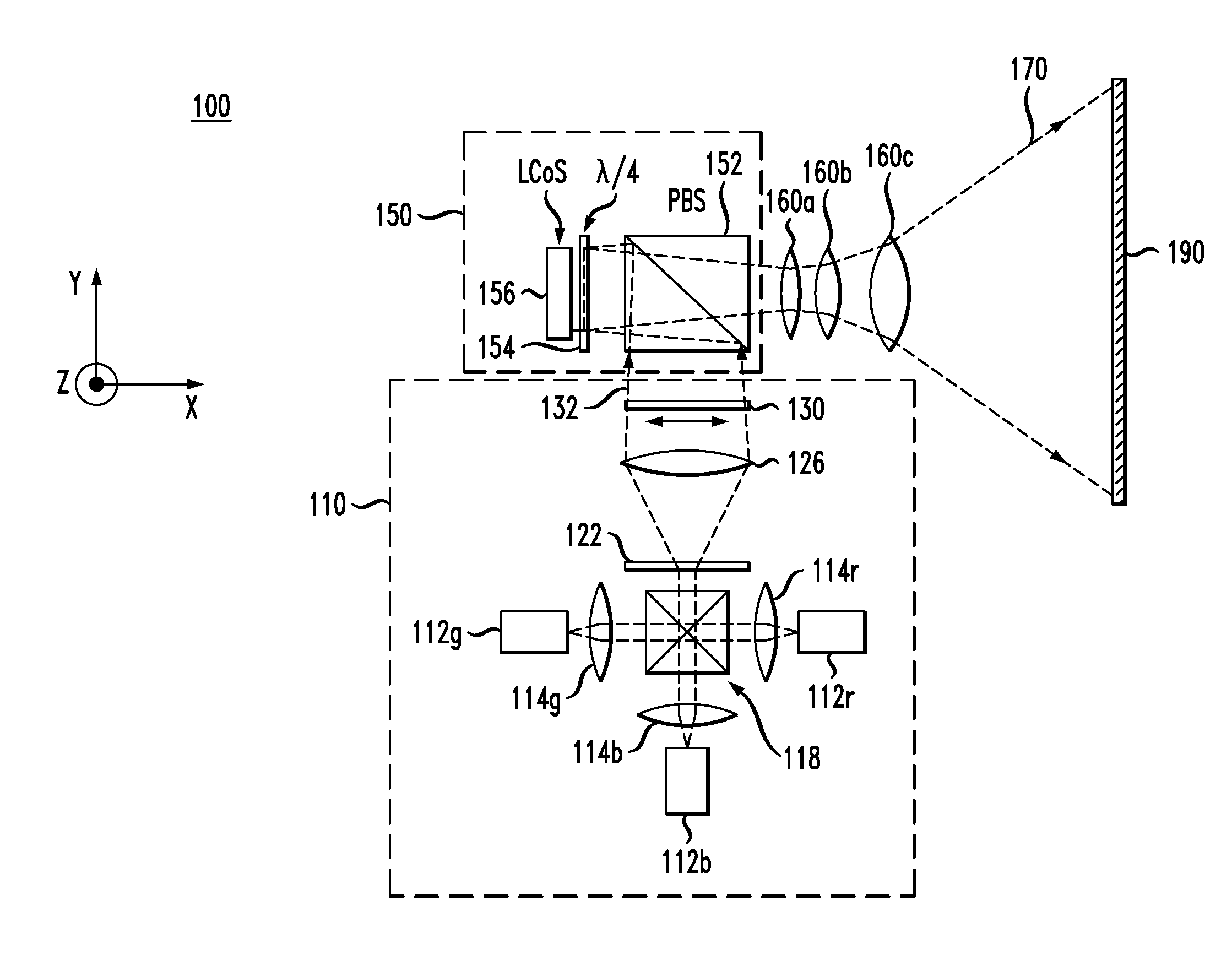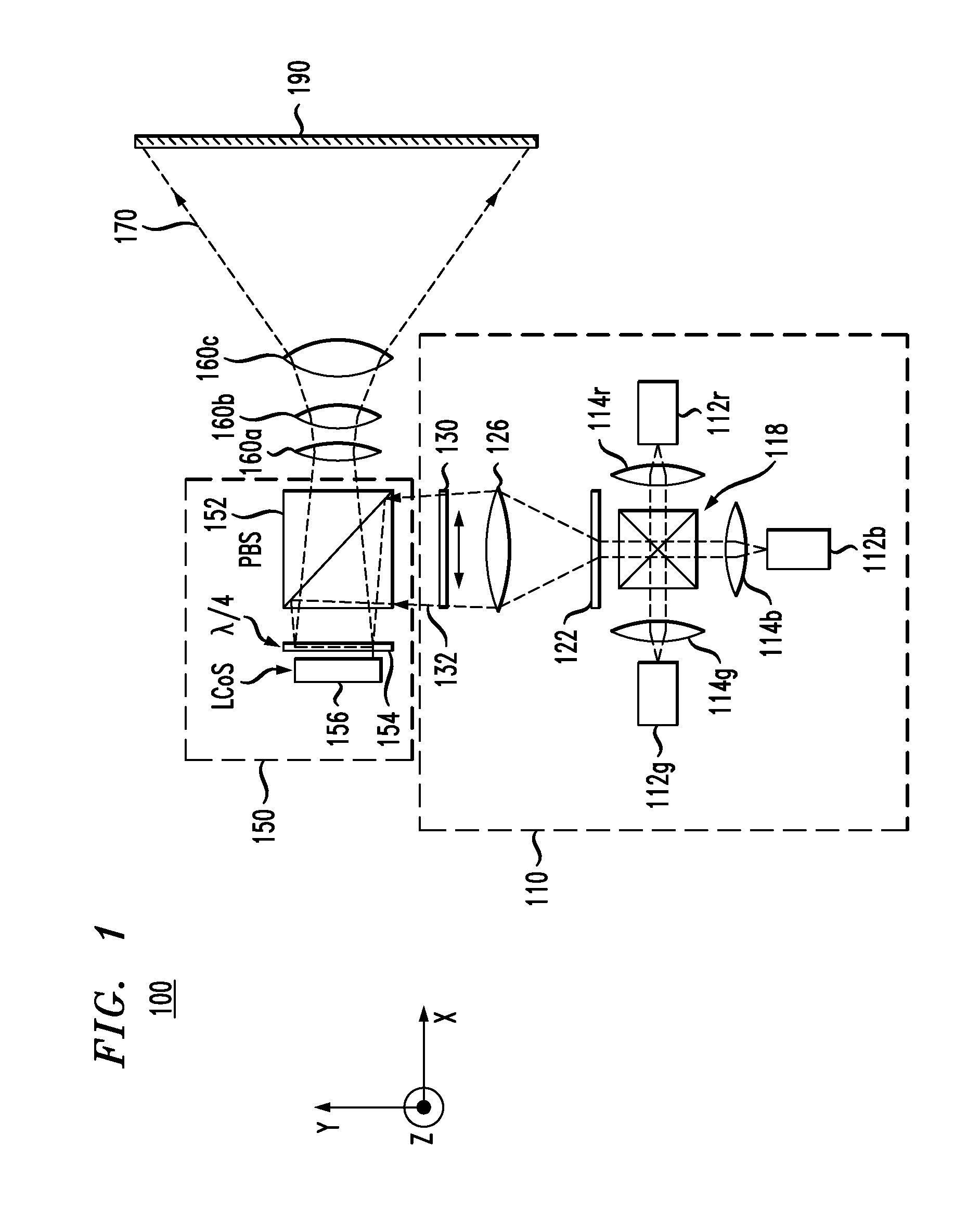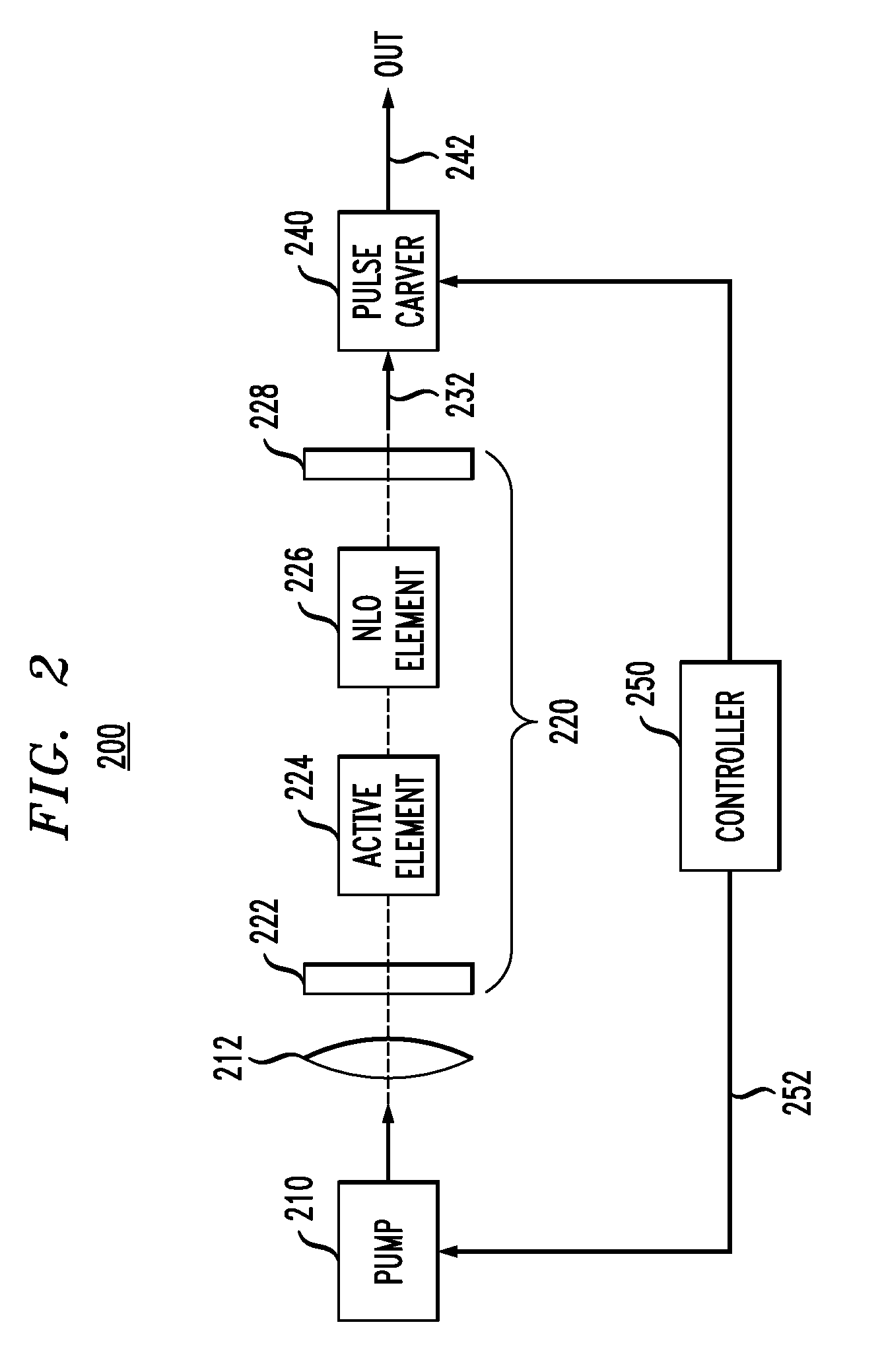Image projector employing a speckle-reducing laser source
a laser source and laser source technology, applied in the direction of optical resonator shape and construction, instruments, active medium materials, etc., can solve the problems of laser image projection and speckle phenomenon, and achieve the effect of reducing the appearance of speckl
- Summary
- Abstract
- Description
- Claims
- Application Information
AI Technical Summary
Benefits of technology
Problems solved by technology
Method used
Image
Examples
Embodiment Construction
[0015]In laser image projectors, speckle reduction is generally based on averaging two or more independent speckle configurations within the spatial and / or temporal resolution of the detector, such as the human eye. For the human eye, the averaging time can be deduced from a physiological parameter called the flicker fusion threshold or flicker fusion rate. More specifically, light that is pulsating at a rate lower than the flicker fusion rate is perceived by humans as flickering. In contrast, light that is pulsating at a rate higher than the flicker fusion rate is perceived as being constant in time. Flicker fusion rates vary from person to person and also depend on the individual's level of fatigue, the brightness of the light source, and the area of the retina that is being used to observe the light source. Nevertheless, very few people perceive flicker at a rate higher than about 75 Hz. Indeed, in cinema and television, frame delivery rates are between 20 and 60 Hz, and 30 Hz is...
PUM
| Property | Measurement | Unit |
|---|---|---|
| spectral width | aaaaa | aaaaa |
| incident-angle | aaaaa | aaaaa |
| spectral width | aaaaa | aaaaa |
Abstract
Description
Claims
Application Information
 Login to View More
Login to View More - R&D
- Intellectual Property
- Life Sciences
- Materials
- Tech Scout
- Unparalleled Data Quality
- Higher Quality Content
- 60% Fewer Hallucinations
Browse by: Latest US Patents, China's latest patents, Technical Efficacy Thesaurus, Application Domain, Technology Topic, Popular Technical Reports.
© 2025 PatSnap. All rights reserved.Legal|Privacy policy|Modern Slavery Act Transparency Statement|Sitemap|About US| Contact US: help@patsnap.com



